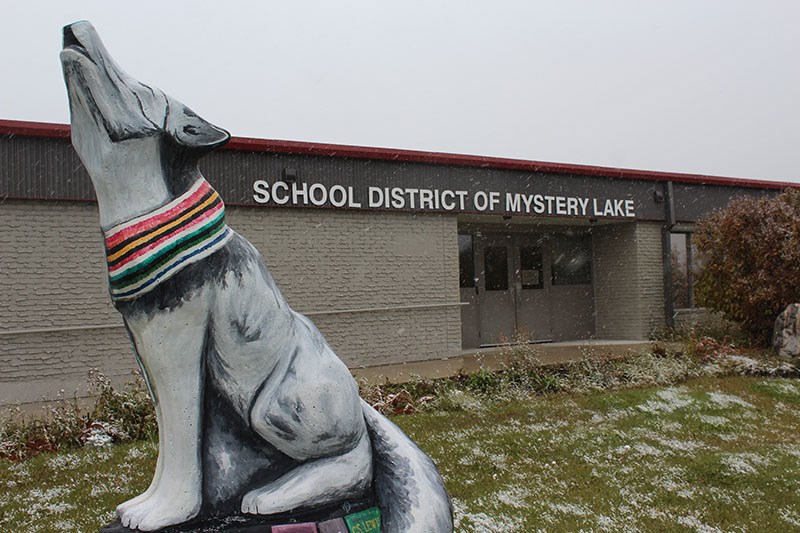In early July, when Manitoba recorded no new COVID-19 cases for nearly two weeks, enthusiasm for plans to reopen schools would probably have been more robust than it is right now, when there have been more than 200 new cases over the last two weeks and some of the highest numbers of new cases per day since the first positive test for the novel coronavirus was recorded in Manitoba in mid-March.
Following the initial shutdown, not only of schools but also of non-essential businesses, places of worship, indoor recreation facilities and even, for a time, playgrounds, Manitoba began a gradual economic reopening and, for a while, things were going OK. These days, however, it seems that some people have forgotten how to protect themselves and others from the coronavirus, which is worrying to the public at large, but especially parents with school-aged children, teachers and other school staff who are preparing to welcome students back to classrooms on Sept. 8. It was probably always understood, at least intellectually, that reopening schools was going to lead to an increase in the number of COVID-19 cases in the province but now people are thinking not about an increase from a few cases a day to maybe a dozen, but from a few dozen a day to perhaps even more than 100.
Schools are what Manitoba’s chief provincial public health officer Dr. Brent Roussin frequently referred to in the early days of the pandemic as “congregate settings,” a class that also includes facilities like hospitals, personal care homes and correctional facilities. They are designed to accommodate a large group of people in as small a building (or buildings) as possible. Students, teachers and staff share entrances, exits, bathrooms, classrooms, hallways, the gym, the cafeteria and the music rooms, among others. In the case of a high school, the same classroom could host five different groups of students over the course of a day. Assuming that there are 20 students per class, that exposes a teacher to 100 students a day and those students are also in contact with other teachers and students. It’s easy to see how something like a virus could quickly spread amongst the students and staff. When it comes to Thompson’s elementary/junior high schools, the chances of COVID-19 spreading are still substantial, despite that fact that some schools have fewer than 300 students (last year Wapanohk had about 500), because younger students aren’t always the best at washing their hands or not touching things, while older students’ desire to hang out with their friends may result in them ignoring physical distancing recommendations and mingling with students from other classrooms. Every parent knows that the start of school is followed closely by the onset of cold and flu season. Some of this is simply due to the seasonal cycle of respiratory illness, but it is also exacerbated by bringing large groups of people together, especially as fall wears on and opportunities for students to be outside become fewer and fewer.
Having provincial and district-level plans for how to try to reduce the risk of exposure for students and school staff is great, but the reality is that nobody is going to have any idea how well these plans are going to work until the first dry run at them, also known as the first day of school. Ideas that seemed good in theory are likely going to turn out to be unworkable in practice and the first few weeks of the school year will likely see a lot of changes made and plans tweaked in order to adapt them to how things actually work, rather than how we’d like them too.
It’s also important to remember that while schools are a closed environment, in which it is possible, at least in theory, to limit the number of people a given student or teacher or staff member comes into contact with, there are more hours in the week when students and staff aren’t at school and can come into contact with people from other schools at after-school programs or at sports or leisure activities, depending what ones will be running.
The good news for Thompson, at this point, is that, as far as we know, there aren’t a large number of people with COVID-19 in the region, which makes sending kids back to school less daunting than it might be in, say Brandon, where the number of cases has grown dramatically in the last few weeks. But odds are that, eventually, the virus will become more common in Northern Manitoba and that having schools open will represent a real risk of increasing everyone’s chances of being exposed to COVID-19.
Reopening the economy was always bound to result in more coronavirus cases in the province. The question that many people have right now is, what effect will reopening schools virtually all at once have on COVID-19 case numbers, which have been steadily growing in the province over the past few weeks? Also, if in-class instruction at Manitoba schools results in greater spread of the coronavirus, how many cases will it take for the provincial government to decide that the risk outstrips the reward?




